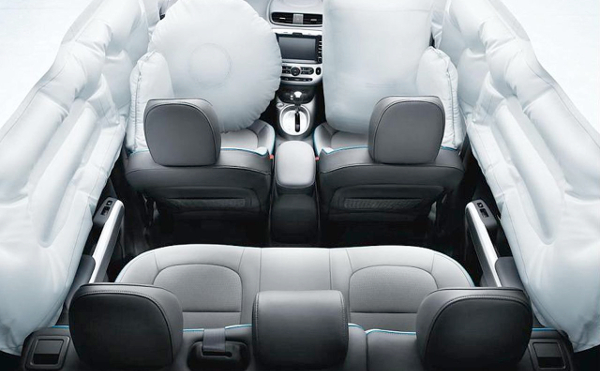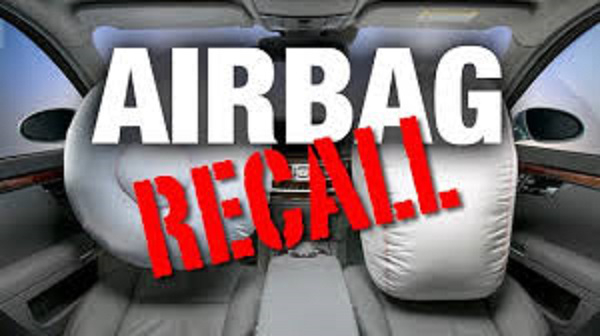
As the number of auto safety devices increases, the number and severity of injuries decreases.
The recent headlines about the Massive Takata Airbag Recall, got me thinking about how many fewer Facial Fractures I see in the ER. It is true that an increasing number of drivers, and passengers, are seen with facial abrasions from hitting these powerful air cushions. However, the number of patients seen in Emergency Departments with facial fractures continues to decrease.
Maybe We Are Driving Safer? (Why Are You Laughing?)
Multiple studies have demonstrated that the combination of seat belts and air bags provides a significant decrease in your chances of suffering a facial fracture, or other facial injury, during a car crash. As identified in the article Facial Fractures in Motor Vehicle Collisions: Epidemiological Trends and Risk Factors, when seat belts and air bags are functioning:
- The incidence of facial fractures decreases (P < .01).
- The probability of facial injury with newer car models decreases (P < .01).
- The risk of facial fractures decreases (OR, 0.14; 95% CI, 0.09-0.22).
Interestingly, air bags alone were not associated with a reduced probability of injury (OR, 0.78; 95% CI, 0.58-1.06). Moreover, side impacts (OR, 1.81; 95% CI, 1.14-2.86) and mismatch in the sizes of the crash vehicles (OR, 1.99; 95% CI, 1.27-3.12) were associated with an increased risk of facial fractures.
It’s Not Just the Air Bags
According to the article Effect of air bags and restraining devices on the pattern of facial fractures in motor vehicle crashes: seat belts alone were more effective at reducing facial fractures than air bags alone. Seat belts alone reduced the incidence of facial fractures in motor vehicle accidents from 17% to 8%. Air bags alone provided a reduction from 17% to 11%, while the combination of seat belt plus air bag provided the best protection, from 17% down to 5%.
How the Face Breaks

Rene Le Fort documented how the face breaks with severe trauma. In Le Fort I fractures, the upper jaw is separated from the face. With Le Fort II fractures, the nose and upper jaw are separated from the face. A Le Fort III fracture is the separation of all the facial bones from the skull. All Le Fort fractures are worth avoiding, and are less likely, if you wear your seat belt.
Plastic Surgeons classify Facial Fractures by the location and pattern of the breaks. The most commonly used terminology is based on the often gruesome work of French surgeon Rene Le Fort. While the number of facial fractures is reduced by the combination of air bags and seat belts, the pattern of fractures is almost the same. The only exception was for ZMC fractures of the cheek, which points to an area that can still be improved.
Memphis Grizzlies point guard Mike Conley is familiar with the ZMC fracture. You may have noticed him wearing a protective mask during his team’s attempt at eliminating The Golden State Warriors from the 2015 NBA playoffs. Go Dubs.
Use It, or Lose It
Studies show the importance of personal protection while driving. The human body was not designed to accelerate, or more accurately decelerate, as fast as our cars can. With more states mandating the use of passive restraints, and more requirement for smart restraints, fewer facial fractures can be expected. On the other hand, your seat belts only protect you if your are wearing them properly.
Vehicles on the Takata Airbag Recall List

Takata has been the subject of several recalls recently. Be certain to check the site below for an up-to-date list.
I have tried to include all vehicles on the Takata Airbag Recall List here:
- Acura:
- 2002–2003 TL
- 2002 CL
- 2003–2006 MDX
- 2005 Acura RL
- BMW (approximately 765,000):
- 2000–2005 3-series sedan and wagon
- 2000–2006 3-series coupe and convertible
- 2001–2006 M3 coupe and convertible
- Chrysler (approximately 2.88 million, including Dodge):
- 2004–2008 Chrysler 300
- 2007–2008 Aspen
- Dodge/Ram (approximately 2.88 million, including Chrysler):
- 2003–2008 Dodge Ram 1500
- 2004–2008 Ram 2500, Dakota, and Durango
- 2004–2007 Charger
- 2004–2008 Ram 3500 and 4500
- 2008 Ram 5500
- Ford (538,977):
- 2004–2005 Ranger
- 2005–2006 GT
- 2005–2008 Mustang
- Honda (approximately 5.5 million, including Acura):
- 2001–2007 Accord (four-cylinder)
- 2001–2002 Accord (V-6)
- 2001–2005 Civic
- 2002–2006 CR-V
- 2002–2004 Odyssey
- 2003–2011 Element
- 2003–2008 Pilot
- 2006 Ridgeline
- Infiniti:
- 2001–2004 Infiniti I30/I35
- 2002–2003 Infiniti QX4
- 2003–2005 Infiniti FX35/FX45
- 2006 Infiniti M35/M45
- Lexus:
- 2002–2007 SC430
- Mazda (330,000, est):
- 2004–2008 Mazda 6
- 2006–2007 Mazdaspeed 6
- 2004–2008 Mazda RX-8
- 2004–2005 MPV
- 2004 B-series
- Mitsubishi (11,985):
- 2004–2005 Lancer
- 2006–2007 Raider
- Nissan (approximately 1,091,000, including Infiniti):
- 2001–2003 Maxima
- 2001–2004 Pathfinder
- 2002–2006 Nissan Sentra
- Pontiac:
- 2003–2005 Vibe
- Saab:
- 2005 9-2X
- Subaru (17,516):
- 2003–2005 Baja, Legacy, Outback
- 2004–2005 Impreza, Impreza WRX, Impreza WRX STI
- Toyota (approximately 1,514,000*):
- 2002–2007 Toyota Corolla and Sequoia
- 2003–2007 Matrix
- 2003–2006 Tundra
- 2004–2005 RAV4
- *Estimate including Lexus and Pontiac Vibe
Other Auto Recall Resources
You can also lookup your vehicle by Vehicle Identification Number (VIN) on the SaferCar.gov website. The site includes all recalls, not just airbags. Since it can take a few weeks for new defects to be listed, be certain to recheck the site periodically.
Previous Post Next Post